A Day in the Life: Aboriginal Ministry
April 8, 2019This month you’re invited to read about Sr Kathryn’s Aboriginal Ministry.
The Aboriginal Catholic Ministry (ACM) tentatively began in the Diocese of Lismore at Bowraville with the arrival of Fr Bernie Ryan sm around 1990, the same time that three aboriginal children in Bowraville were murdered, a case that is still unresolved.
Some years later (1995) the ACM was formalised as an Inter Provincial project consisting of a team of Marist Fathers, a Mercy Sister and a Christian Brother based in the Southern part of the Diocese.
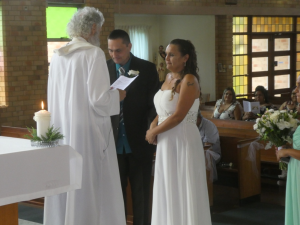
In 2001 I was appointed to this team. For six months during my discernment time, I was exploring where there was a need. Aunty Ponnie (Yvonne del Signore) a Bundjalung Catholic elder invited me to Ballina to meet the local community. It was Aunty Ponnie who suggested that I come and be with the Catholic mob in the Ballina area and surrounds as they really didn’t have anyone ministering to them in the Northern part of the Diocese. Since that time I have been doing a dual ministry of Aboriginal and Parish Pastoral Associate in St Francis Xavier Parish, Ballina.
During this time Aunty Ponnie has been mentor and friend guiding me in the cultural ways of the Bundjalung people. Aunty Ponnie was the conduit for me and the local community. Sad to say Aunty Ponnie died last year.
Ministry is blessed with chaos and drama. I try to bring some order and calm to situations as they arise e.g. being with the families and individuals in their vulnerability and fragility particularly in times of grief and tragedies. On the other hand there are wonderful times of ‘get togethers’ for special occasions such as NAIDOC Week and other family celebrations. Just recently the parish celebrated its first Aboriginal Catholic wedding, a joyous and treasured memory for all concerned.
There was change to the ACM two years ago when the Marist Fathers withdrew from the Diocese leaving a big hole in the ministry. Prior to their departure Aboriginal Masses were held once a month in each region. Baptisms and Funerals were included in the ministry. With that departure the ACM is left with only myself in the Northern part of the Diocese and Br Steve Morelli cfc in the Southern part of the Diocese. Part of Steve’s ministry is working in linguistics and enabling Aboriginal languages to be accessible.
Preparation for Sacraments of Confirmation and Holy Communion are done through the St Francis Xavier Parish. The personal approach that I use is another means of contact with the families and a way of knowing that the children are prepared to celebrate the particular Sacrament.
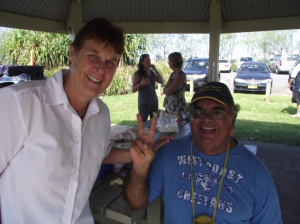
My ministry is one of privilege and trust as I develop and continue to build meaningful relationships within the community. The Aboriginal people feel free to drop into the parish office when in need or to get help. My pastoral role in the parish has allowed this connection to evolve.
Over the years I have witnessed a real growth within the Aboriginal community; there are more students completing Year 12 and accessing tertiary education than in earlier years. The employment level within the area has greatly improved.
It is with gratitude and joy that I continue this ministry with the Aboriginal Community in the northern part of the Diocese of Lismore.
Kathryn Sweeney rsj
Images provided by Sr Kathryn Sweeney. Used with permission.
Fr Julian: Man of Words – Letter Three
April 7, 2019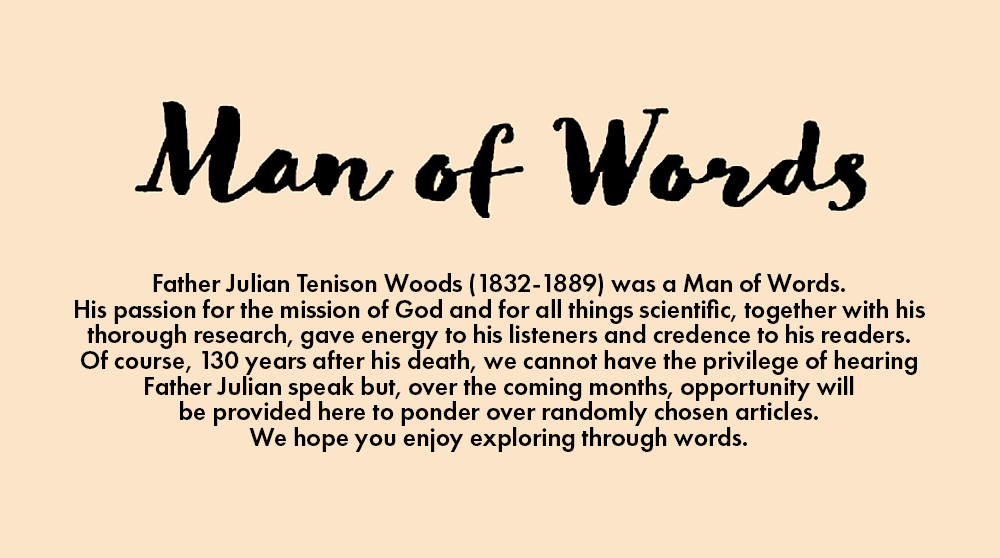
On 21 May 1887, the Sydney Morning Herald [i] published an article by Fr Julian Tenison Woods on his trip to the Victoria River.
This river (named for Queen Victoria) runs from the northern edge of the Tanami Desert to the coast near the Western Australian-Northern Territory border.
Father Julian obviously enjoyed his trip in 1886 and gives his readers historical and geological background about the river and careful descriptions of all he saw along the way. He describes the river as strangely impressing him, having a beauty of its own and that is high praise considering all the rivers he had travelled in his lifetime.
World Health Day 2019
World Health Day 2019 – how universal is our health coverage?
 World Health Day 2019 falls on Sunday April 7. The Slogan, Universal Health coverage everyone, everywhere, tends, in the popular imagination, to focus our attention on developing countries that have no health insurance, inadequate vaccination programmes and underdeveloped health systems and facilities.
World Health Day 2019 falls on Sunday April 7. The Slogan, Universal Health coverage everyone, everywhere, tends, in the popular imagination, to focus our attention on developing countries that have no health insurance, inadequate vaccination programmes and underdeveloped health systems and facilities.
In contrast Australia has one of the best health systems in the world with universal free health coverage, the option of private insurance, a sophisticated and integrated two tier hospital system, access to scheduled and effective vaccination, world renowned research institutions and an integrated and timely emergency system. ‘The richness of our increasing diversity’ is evident in a visit to any hospital or health service, yet even a superficial look beneath the surface challenges us to greater inclusivity.
The report on Australia’s health 2018 tells us that compared with 35-member countries of the Organisation for Economic Co-operation and Development (OECD), Australia scores in the middle or highest range for most health indicators. Conversely Australia ranked in the worst third of OECD countries for obesity, and our alcohol consumption is slightly above the OECD average.
Not surprisingly obesity and alcohol consumption as well as other risk factors are highest in people who suffer socioeconomic disadvantage – Australia’s Health 2018 (AIHW).
The 40% of Australians in the lower two socioeconomic quintiles – ten million people – are more prone to behavioural risk factors such as physical inactivity; alcohol consumption and smoking, and the biomedical risks of high cholesterol; high blood pressure and obesity.[1]
A global level socioeconomic position is largely influenced by economic, political, cultural and environmental determinants, educational attainment, income and occupation. The relationship is two-way—poor health can be both a product of, and contribute to, lower socioeconomic position. In the microcosm that is Australia the same applies, with identifiable groups tending to fall through the gaps in the health system. These include those unable or unwilling to access available services because of:
- Distance – those in rural and remote areas including some indigenous populations
- The homeless and unemployed; those with mental illness or disability
- Fear and shame- some cultural norms or personal fears keep people from seeking help
- Inability to use technology
- Inadequate education
- The complexity of the health system and bureaucracy
- Lack of awareness of what is available because of language barriers, an inability to read or comprehend information
- Lack of access to information
- No access to transport
- Lack of recognition of rights and needs, e.g., asylum seekers and refugees.
 So, what is the challenge to us, Sisters, associates, friends and colleagues alike from the 26th General Chapter? Recently on Facebook Annie Bond rsj posted a quote from Christianity Today. It read: ‘helping one person may not change the world but it could change the world for one person.’
So, what is the challenge to us, Sisters, associates, friends and colleagues alike from the 26th General Chapter? Recently on Facebook Annie Bond rsj posted a quote from Christianity Today. It read: ‘helping one person may not change the world but it could change the world for one person.’
It is within the scope of many of us to do something for at least one person. In Ephesians 4; 11 St Paul identified the apostles, the prophets, the evangelists, the pastors and teachers as necessary to equip God’s people for works of service. In Australia today could we add friends, neighbours, interpreters, readers, drivers, healers, pray-ers and advocates who can help make our health system ‘Universal for everyone, everywhere’ in Australia?
Antoinette Baldwin rsj
Official World Health Day website
[1] https://www.vu.edu.au/sites/default/files/australias-health-tracker-by-socioeconomic-status.
Images:
Strawberry juice beside fruits on top of table by Element5 Digital obtained on Unsplash.
Person-using-black-blood-pressure-monitor obtained on Pexels. Used with permission.
Why Did Fr Julian Woods Found the Josephites?
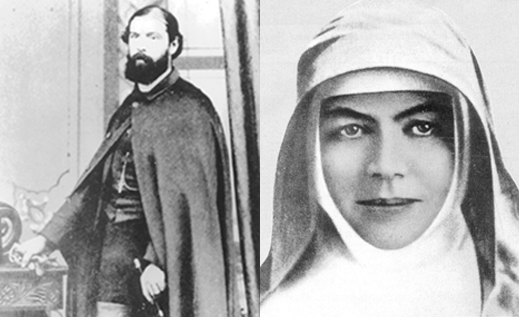
In the year 1866 Father Julian Woods, aided by Mary MacKillop, founded the Sisters of Saint Joseph in Penola, South Australia, for the Catholic Education of children from poor families. [1] But why did this busy priest working in one of the largest mission areas in the colony take this step?
A Reflection on Life Vows
April 6, 2019Celebration of Dianne Colborne’s Final Commitment
As part of Dianne Colborne’s Final Commitment celebrations, Sr Emilie Cattalini gave a talk on her Reflection on Life Vows.
This is what a monk once wrote in his journal: “Dance in the sun, you tepid idiot. Wake up and dance in the clarity of perfect contradictions, you fool. It is life that makes you dance. Have you forgotten?”
We have all seen those truly awe-inspiring super-slow-motion images of a flower in its first moments of pushing through the earth and into the sunlight. There is so much movement you would swear the plant is dancing. So much movement, so much life! Whole eco-systems all over our planet.
We are meant to be breathless with awe at the beauty and amazing inter-dependence and intricacies of creation! To treat everything with respect and protect its place on this small, fragile, magnificent planet of ours.
And in that sentence, we have one of the perfect contradictions that the monk wrote about in his journal. Who can forget that image of the blue planet sent back to us from space! Deep in our psyche has been stamped the realisation, as never before, that – for all its magnificence- we live on but a tiny, fragile, round, rotating speck afloat in this vast, vast expanding universe!
But what a planet it is! Just enough oxygen in its atmosphere for us to breathe; just enough sunlight for life to thrive; just enough gravity to keep us all grounded! What an amazing work of art! What choreography! What a Dance!
It is a world where even the tiniest sub-atomic particle cannot exist except if its relationship to other particles and energies remains intact. Nature knows the steps of the Dance!
“I said to the almond Tree, ‘Sister, speak to me of God’, and the almond tree blossomed.”
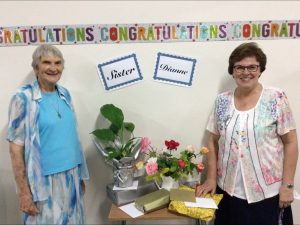
But what of us? This immense humanity that has been called “the human layer of the earth”! For us the Dance is no different. We exist, live, move, have our being only in relationships. No one thrives without relationship. That is the whole message of Jesus. In spite of all our contradictions and dancing out of step, as the poet tells us, “nature is never spent, for the Holy Spirit o’er the bent world broods with warm breast, and ah! bright wings.”
What has all this got to do with Dianne and the choice she has made to live for the rest of her life as a Religious with the vows of Chastity, Poverty and Obedience? What have these Gospel values to do with nurturing and maintaining a wholesome human eco-system? With people fully human, fully alive? With a magnificent choreography of humanity as dreamed by our Creator?
Well, we can move from awe and wonder and interdependence and the joy of all tumbling out of the Womb of God as sisters and brothers; from the sharing and the knowing that ‘with my basket and your basket together’, there is enough for everyone – to, I want to keep my own basket! I may even get jealous of what you have in your basket and plan to take it from you! And it’s not only possession of things. It overflows to status, recognition, praise, fame, an appetite for celebrity, for glamour. Or, it can turn inwards and become a sense of worthlessness, of ‘not good enough’ of helplessness and depression. What’s the answer? How do we, as individuals and as nations, stay with the steps of the Dance?
Continue reading Emilie’s speech below:
Reflection on Life Vows Speech (PDF)
Emilie Cattalini rsj
Find out more on the different Josephite ways of Commitment here
Photos used with permission.
Year of Indigenous Languages: Aboriginal and German
The United Nations has declared 2019 as the International Year of Indigenous Languages. To celebrate, for each month this year, you’re invited to view greetings for different languages.
For April, we feature the languages Aboriginal (Yankunyjatjara) and German:
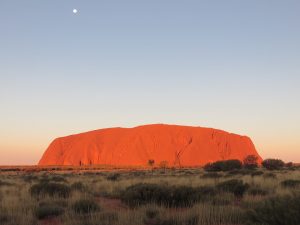 Aboriginal (Yankunyjatjara)
Aboriginal (Yankunyjatjara)
Nganampa Mama-God Ilkari munu nganampa Mantanguru palyanguru nganananya blessamilila munulanya Godaku pilunpa ungama – May our God of Heaven and of our beautiful Earth bless us and bring us God’s peace
German
Gott schütze dich – God bless you
To find out more on the International Year of Indigenous Languages, visit their website below:
The International Year of Indigenous Languages
Image Uluru Ayers Rock Australia obtained from Pixabay. Used with permission.
St Mary MacKillop School Wallaroo
April 5, 2019You’re invited to read a speech by Helen Duke rsj delivered at St Mary MacKillop School, Wallaroo, South Australia – Australia’s longest continuing Josephite School 1869-2019.
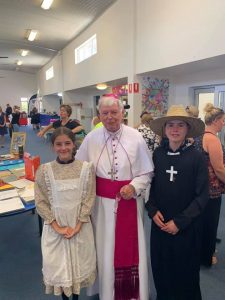
Good afternoon and thank you for this opportunity to say a few words on this special occasion, your sesquicentenary. Wallaroo was very familiar to Mary MacKillop, her footprints would be all over this town that she visited often, trudging up from the wharf and later from the railway station to visit her Sisters and their students.
From about 1865 until the arrival of the first resident Parish Priest, Father William Kennedy in 1867, a small Catholic School operated in this town. Father Kennedy immediately closed this school and refused to reopen it until he had the newly formed Sisters of Saint Joseph in his parish.
Father Julian Woods and Mary MacKillop established the Sisters of Saint Joseph for the catholic education of children from poor families in response to Bishop Geoghegan’s strong request that every parish have a catholic school. He wrote:
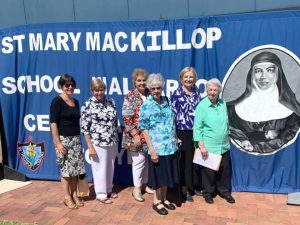
So it was that in 1869, Sisters Catherine O’Brien, aged 23 years, and Margaret O’Loughlin, aged 18 years, set off by steamer for the Port of Wallaroo.
Whenever I think of Wallaroo, I have an image of a resilient community with, a resilience that has sustained all involved in this school over the past 150 years. There was certainly little else in this poor mining town on which to draw resources, or inspiration…
Continue reading Helen’s speech below:
Helen Duke rsj
Footnotes:
[1] That was the title of the Rule of Life he wrote for them in 1867
[2] Rule, Article 13
[3] Mary MacKillop from London, 1873.
Photos provided by Helen Duke rsj. Used with permission.
Sydney Town Hall Assembly
April 3, 2019On Thursday evening 14 March, in the lead up to the New South Wales (NSW) Election, Sisters and students from Josephite schools joined with 2000 of Sydney’s citizens and over 60 organisations in the Sydney Town Hall Assembly on Affordable Housing and Affordable and Renewable Energy in what the organisers called an incredible display of democratic power.
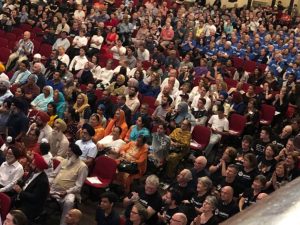
The evening was organised by Sydney Alliance, St Vincent De Paul (SVDP) NSW, and Everybody’s Home, and was described as the largest and most diverse gathering ever seen in Sydney on secure, affordable housing, and affordable, renewable energy. The diversity and breadth of the civil society groups present was celebrated in a powerful roll call.
At the start of the evening we were welcomed by the Lord Mayor of Sydney, Clover Moore, before hearing moving stories from ordinary people whose lives have been severely affected by the current system of affordable housing provision, no cause rental evictions, and the effect on families of exorbitant energy costs. Speaking only for a few minutes each, their stories reflected the experience of many, mainly low-income earners, in the wider community.
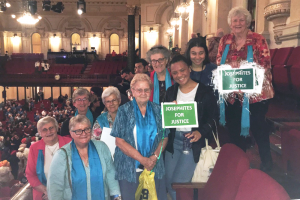
The makers of policy had a chance to respond to what they’d heard and representatives from the major parties in the Federal and State parliaments outlined what had been done in the past and what they planned for the future. They were asked to make a commitment to aims of the evening – i.e. to take concrete steps to provide more secure, affordable housing, the removal of no cause rental evictions, and the provision of clean, affordable energy.
All the politicians said they look forward to working with Sydney Alliance, SVDP NSW and Everybody’s Home in achieving these goals, and the organising groups committed to working with whoever wins the upcoming state and federal elections to ensure that the right to a home and to clean and affordable energy can be shared by all.
Laraine Crowe rsj
Photos provided by Laraine Crowe rsj. Used with permission.
